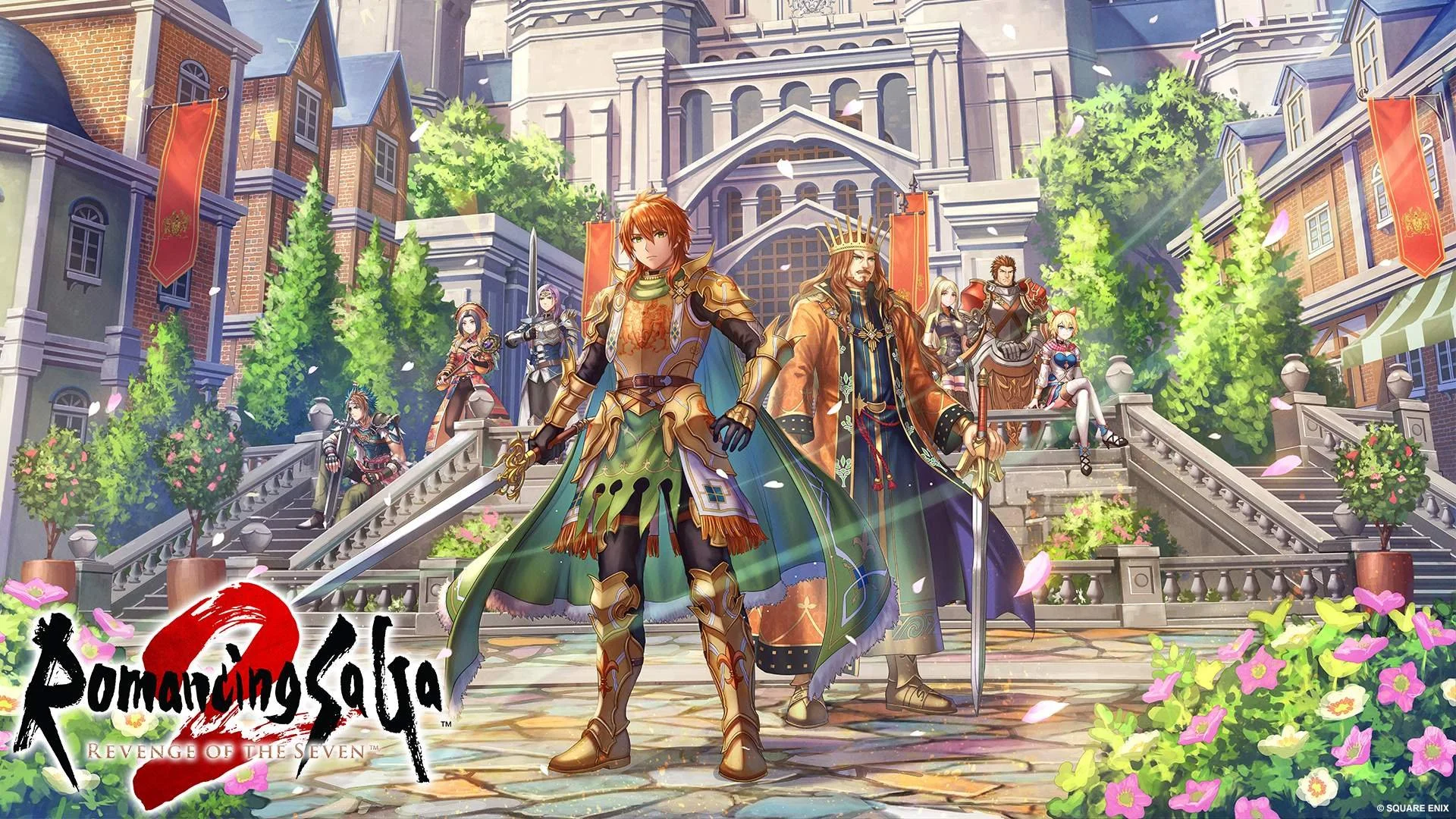Romancing SaGa 2: Return of the Super Long Name and Super Great Game
Promotional image of RS2:RotS
The SaGa franchise has been a favorite of ours for decades now, going all the way back to the original Gameboy where it was published in the US under the “Final Fantasy Legends” brand. There are a few things about SaGa games that are particularly unique and fun:
Its “glimmer” system has your characters learn new moves based on the weapons they wield and the choices they make in combat.
It lacks a hard leveling system; instead, your stats increase based on the things you do during a fight. Swinging weapons increases your melee attack stats, surviving hits increases your hit points, casting spells increases your magic, etc.
SaGa games typically support a combo system where you trigger unities by having different members of your party use compatible moves in the same turn.
There’s also other recurring mechanical elements that don’t appear in every game, like monster characters who evolve by absorbing abilities from monsters you defeat in battle, mech characters whose stats are updated based on the equipment you give them, etc. Neither of those two mechanics are relevant for this particular game, however.
A member of RS2:RotS’s mercenary class performs a sword technique.
Romancing SaGa 2: Revenge of the Seven is kind of the epitome of a classic JRPG. On the surface it’s an easily grokkable traditional fantasy story about a kings and their heirs protecting and building an empire across multiple generations. Within this story, however, it hides a complex backstory, a robust and evolving world where almost every choice can have cascading consequences, a deep array of spells, techniques, and character classes, and various other mechanical hooks and niches.
RS2:RotS is a lot. It’s a big fantasy game with a menu-based action system that hides layers of nuance and possibility. It also does something almost no other SaGa game has ever bothered to do: it actually tries to hold your hand and walk you through its inner workings and subsystems. SaGa has always been a franchise that says, though not in so many words, “You’ll know if this is for you and we’re not going out of our way to convince you it should be.” It’s not necessarily an exclusionary franchise, but it’s a franchise tailored for people who like to discover the game by playing it. It has not, traditionally, been a franchise that holds your hand and welcomes you into its worlds.
RS2:RotS is kind of an exciting change of pace in that regard. This remaster/remake retains almost every critical element of story and mechanics from its decades-old Super Nintendo / Famicom release and weaves in new clarifying story elements, updated (though still charmingly classic) graphics. It also goes farther than any previous SaGa game in explaining how the game and its systems actually work. It is a much-needed entry point to help introduce players who have never played a SaGa game before into the franchise.
Don’t let the number 2 in the exceedingly long title fool you; you don’t need to have played a SaGa game previously to jump in and enjoy this one. In fact, if you have never played a SaGa game before, we strongly recommend starting right here. You’ll learn a lot of critical fundamentals that will make other entries in the SaGa franchise more accessible. It’s also just a cool, multi-generational family story with significant opportunities for replay, since the choices you make with each character and during each generation within the game will ripple outward, shaping the order, nature, and outcome of a wide array of story events.
You can find this fantastic Square-Enix title here.


